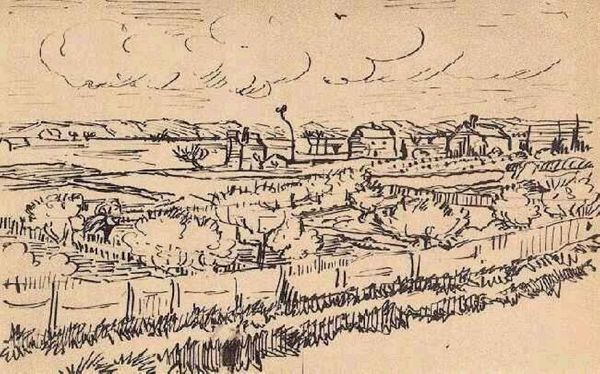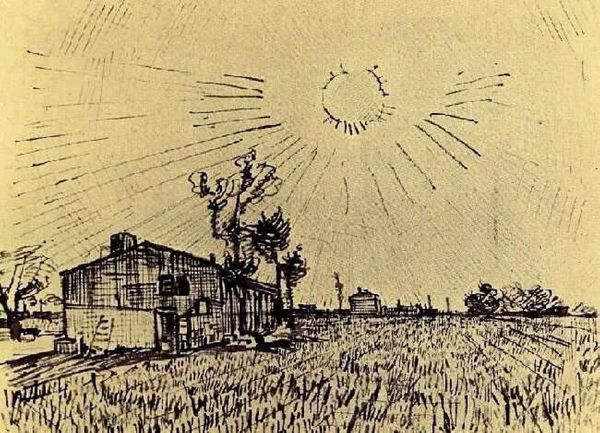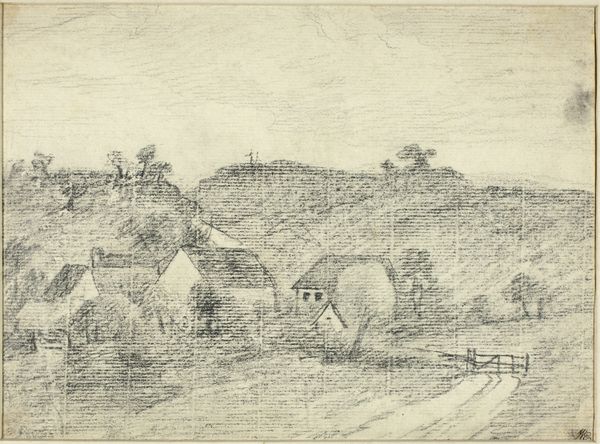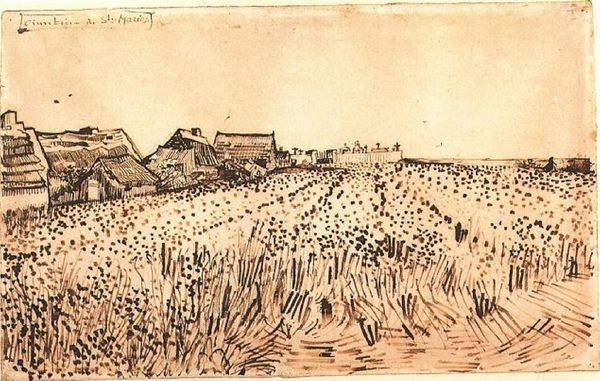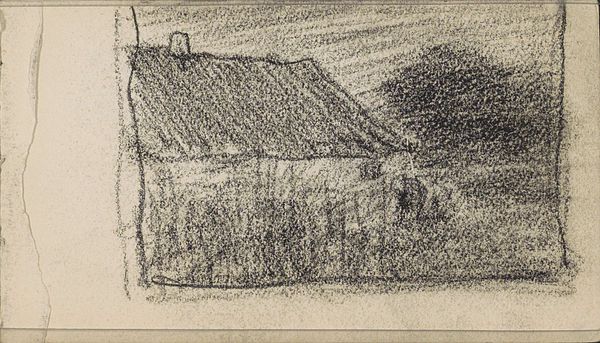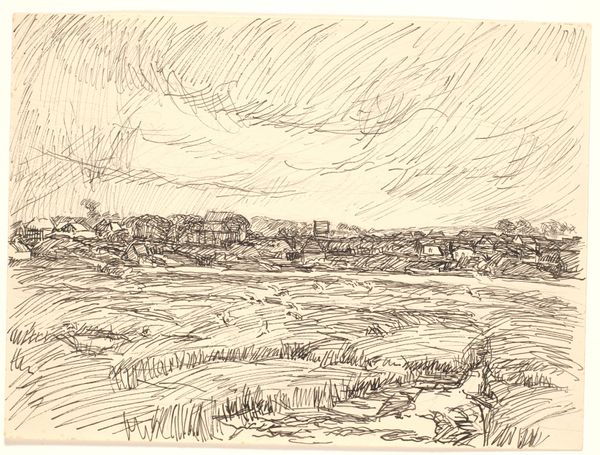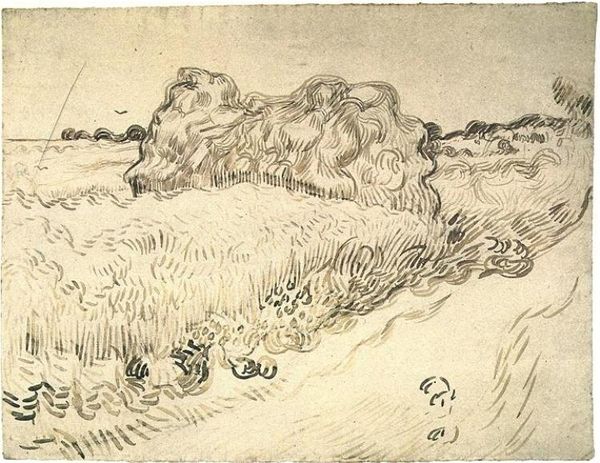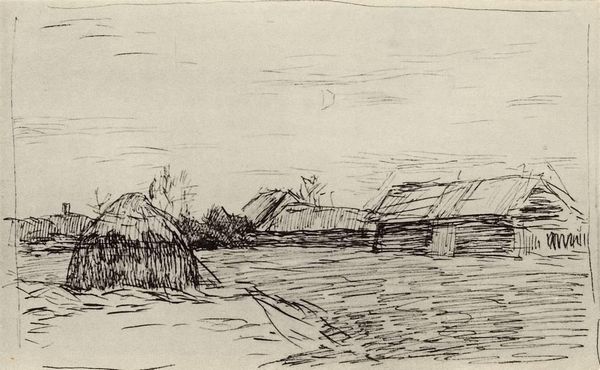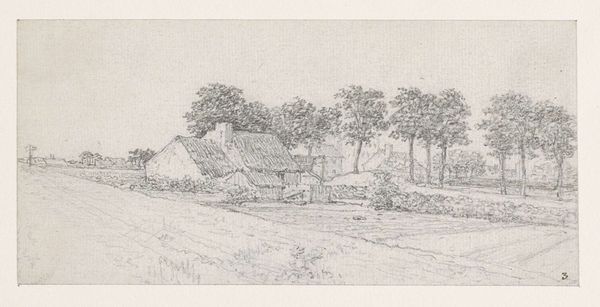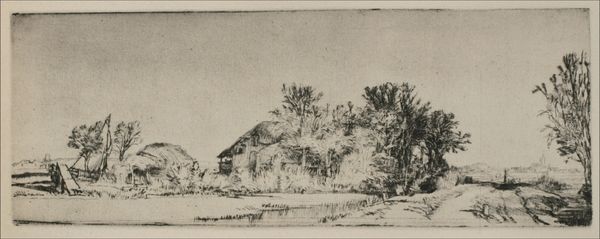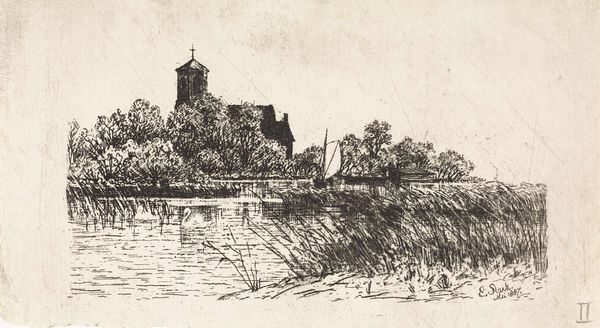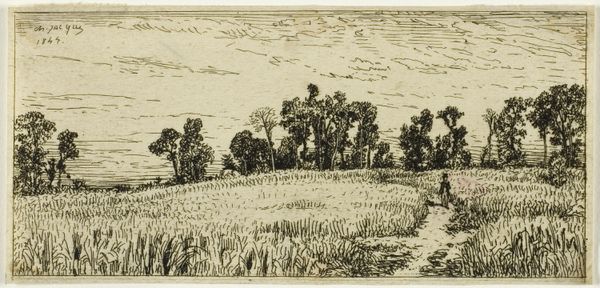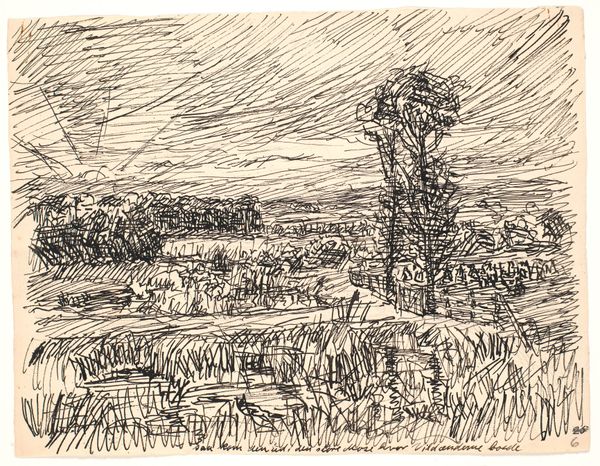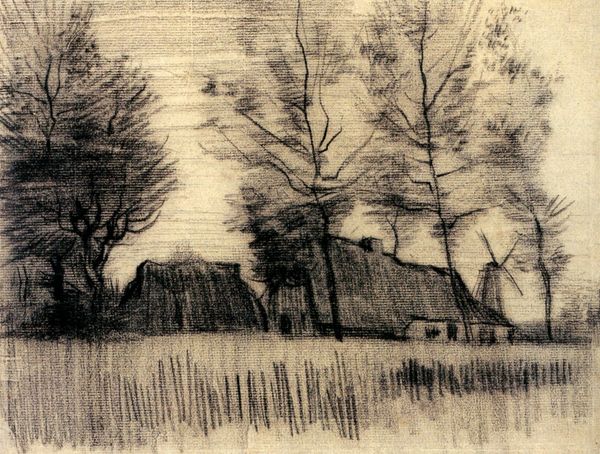
drawing, plein-air, paper, ink
#
drawing
#
impressionism
#
plein-air
#
landscape
#
house
#
paper
#
ink
#
line
#
realism
Copyright: Public domain
Curator: This is Vincent van Gogh’s “Farmhouse in a Wheat Field,” created in 1888 using ink on paper. What strikes you most about it? Editor: The texture! The frantic, almost vibrating energy conveyed through the short, repetitive lines of the wheat field is quite arresting. It practically hums with movement, doesn't it? Curator: Absolutely. Consider that 1888 was a pivotal year for Van Gogh, marked by his move to Arles. This work, therefore, gains significance when viewed through the lens of his mental and emotional state during that transition. The repetitive, almost obsessive lines could be interpreted as a visual manifestation of his inner turmoil. Editor: That’s interesting. I see the formal beauty of the lines creating rhythm, the contrast between the more solid farmhouse and the shifting field, as demonstrating the solid over the transient. Can that reading stand on its own? Curator: It certainly can, and perhaps that's where the dialogue begins. Analyzing this drawing necessitates recognizing the societal pressures Van Gogh faced as an outsider and how his work reflects his personal struggles alongside those formal qualities you mention. We have to ask, who is allowed stability? What did ‘home’ signify to him? Editor: Yet even a troubled individual can produce work demonstrating incredible skill in mark-making and use of perspective to guide the eye. It’s quite cleverly structured; look how our gaze is led from the lower field up toward the house nestled against the horizon. The thick tree trunk anchoring the right side feels intentional. Curator: Intentional, certainly, but the questions remain: what stories are embedded in that ‘intention’? Which histories and structures contribute to who decides and controls representation? How might that manifest even in his landscapes? Editor: I see. So, by considering this artwork, and really analyzing its social construction, as it were, we may achieve deeper meaning. Curator: Exactly. Art isn't made in a vacuum. It’s important to understand the confluence of the artist's personal circumstances and the broader socio-political context. Editor: I suppose there are worse ideas than for this piece to invite viewers into critical inquiry, after all.
Comments
No comments
Be the first to comment and join the conversation on the ultimate creative platform.
